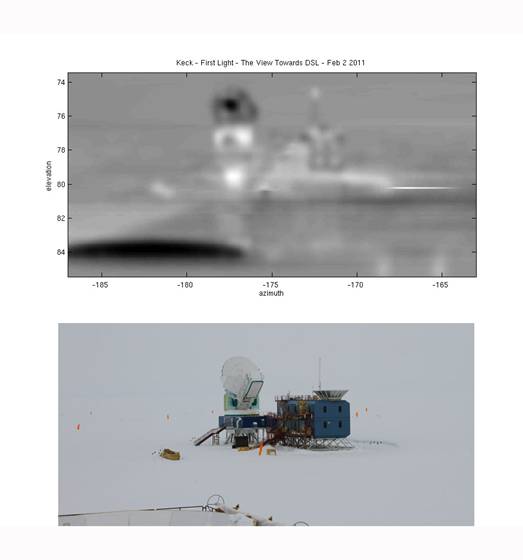The Keck Array
The Keck Array is a sensitive telescope for measuring the polarization of the cosmic microwave background (CMB) on degree angular scales. Like its sister project, BICEP2, it is designed for excellent control of systematics. The Keck Array is made up of several identical telescopes, with the multiple receivers giving increased mapping speed and greater sensitivity. It deployed to its observing site at the geographic South Pole in late 2010, and is currently taking its first data with three receivers. Two additional Keck telescopes will be added in the same mount in late 2011.
The Kuo group at KIPAC is one of the groups collaborating on the Keck Array, and four group members traveled to Antarctica for Keck deployment in the 2010/2011 season. Our Keck Array collaborators are Harvard, Minnesota, Caltech, JPL, Case Western, NIST, British Columbia, and Toronto.
Learn more about this project at the Keck Array website.
Click the images below to see a larger version

Keck Array's 2011 winter-over, Robert Schwarz, celebrates the installation of the three receivers that are observing the CMB during the winter of 2011.

“First light” images from the Keck Array taken in February 2011. The top image is a map recorded by a single polarization-sensitive detector during several hours of calibration scans. A microwave source was mounted on a mast above the Dark Sector Laboratory and modulated at 10 Hz. This image is the background unmodulated signal, showing the South Pole Telescope, the BICEP2 ground shield, the lab, and nearby objects. The lower image is an optical photo for comparison.






